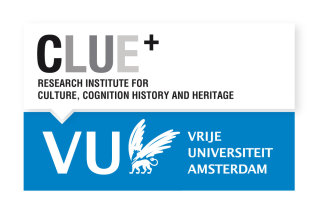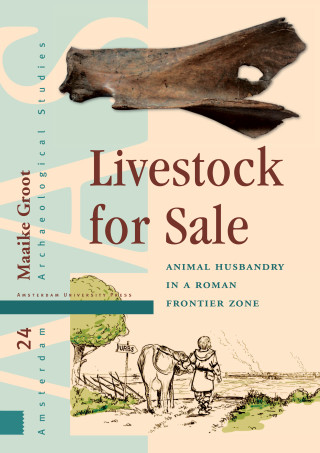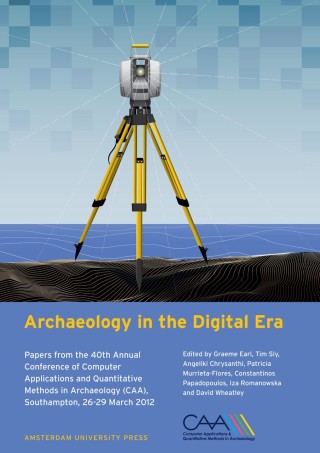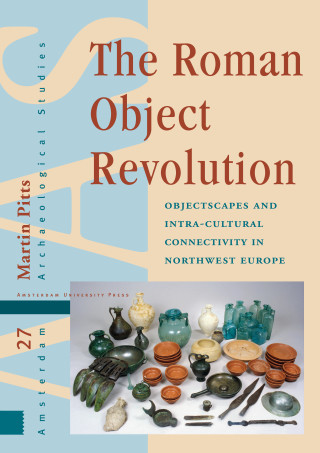

- Title
- Livestock for Sale
- Subtitle
- Animal Husbandry in a Roman Frontier Zone
- Author
- Maaike Groot
- ISBN
- 9789048530281
- Format
- eBook PDF
- Number of pages
- 262
- Language
- English
- Publication date
- 15 - 06 - 2016
- Dimensions
- 21 x 29.7 cm
- Open Access
- Download on Open Access Platform
- Partner

- Discipline
- History, Art History, and Archaeology
- Also available as
- Hardback - € 146,00
FOREWORD
1 INTRODUCTION
1.1 Framework, scope and research questions
1.2 The Dutch River Area in the Roman period
1.3 Economic networks and food provisioning
1.4 Farming in a market economy
2 ARCHAEOLOGICAL SITES: BACKGROUND
2.1 Data and methods
2.2 Classification of sites
2.3 Site background
3 ZOOARCHAEOLOGICAL BACKGROUND
3.1 Species proportions
3.2 Age and sex
3.3 Skeletal elements
3.4 Butchery
3.5 Biometrical analysis
4 METHODS
4.1 Taphonomy
4.2 Species proportions
4.3 Mortality profiles
4.4 Skeletal elements
4.5 Butchery
4.6 Biometrical analysis
4.7 Archaeobotany
5 rRURAL SETTLEMENTS: ANIMAL HUSBANDRY AND CONSUMPTION
5.1 Farming in the Late Iron Age
5.2 Taphonomy
5.3 Species proportions
5.4 Exploitation of livestock
5.5 Skeletal element distribution
5.6 Butchery
5.7 Biometrical analysis
5.8 Arable farming
5.9 Discussion
6 CONSUMERS: URBAN, MILITARY AND TEMPLE SITES
6.1 Taphonomy
6.2 Military sites
6.3 Urban/military sites
6.4 Urban sites
6.5 Temples
6.6 Discussion
7 INTERACTION BETWEEN PRODUCERS AND CONSUMERS
7.1 Species proportions
7.2 Exploitation of livestock
7.3 Skeletal elements: leather and joints of meat
7.4 Butchery
7.5 Biometrics
7.6 Archaeobotany
7.7 Discussion
8 FINAL THOUGHTS
8.1 Food supply
8.2 Changes in farming
8.3 Scale of production
8.4 What did the Romans do for us? Exploitation versus opportunity
BIBLIOGRAPHY
INDEX
Maaike Groot
Livestock for Sale
Animal Husbandry in a Roman Frontier Zone
The civitas Batavorum was a settlement on the north-western frontier of the Roman Empire, and it is now the site of numerous archaeological excavations. This book offers the most up-to-date look yet at what has been discovered, using the newest archaeological techniques, about the town and its economy, its military importance, and the religious and domestic buildings it held. It will be essential reading for anyone studying the economy of the Roman provincial countryside or the details of food supply for the Roman army and town.
Author
Maaike Groot
Maaike Groot specialises in zooarchaeology and lectures at the Archaeological Centre of the VU University Amsterdam.
Related titles

Livestock for Sale
Maaike Groot

Archaeology in the Digital Era
Angeliki Chrysanthi, Konstantinos Papadopoulos, Patricia Murrieta-Flores, Timothy Sly, Earl Earl, David Wheatley, Iza Romanowska, Philip Verhagen (eds)

New Media Archaeologies
Ben Roberts, Mark Goodall (eds)

The Roman Object Revolution
Martin Pitts
